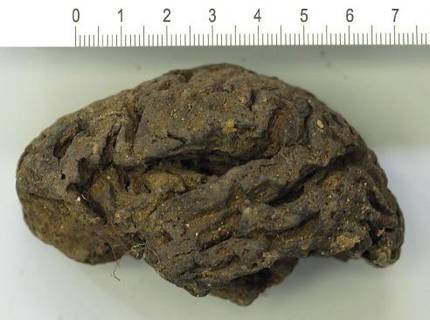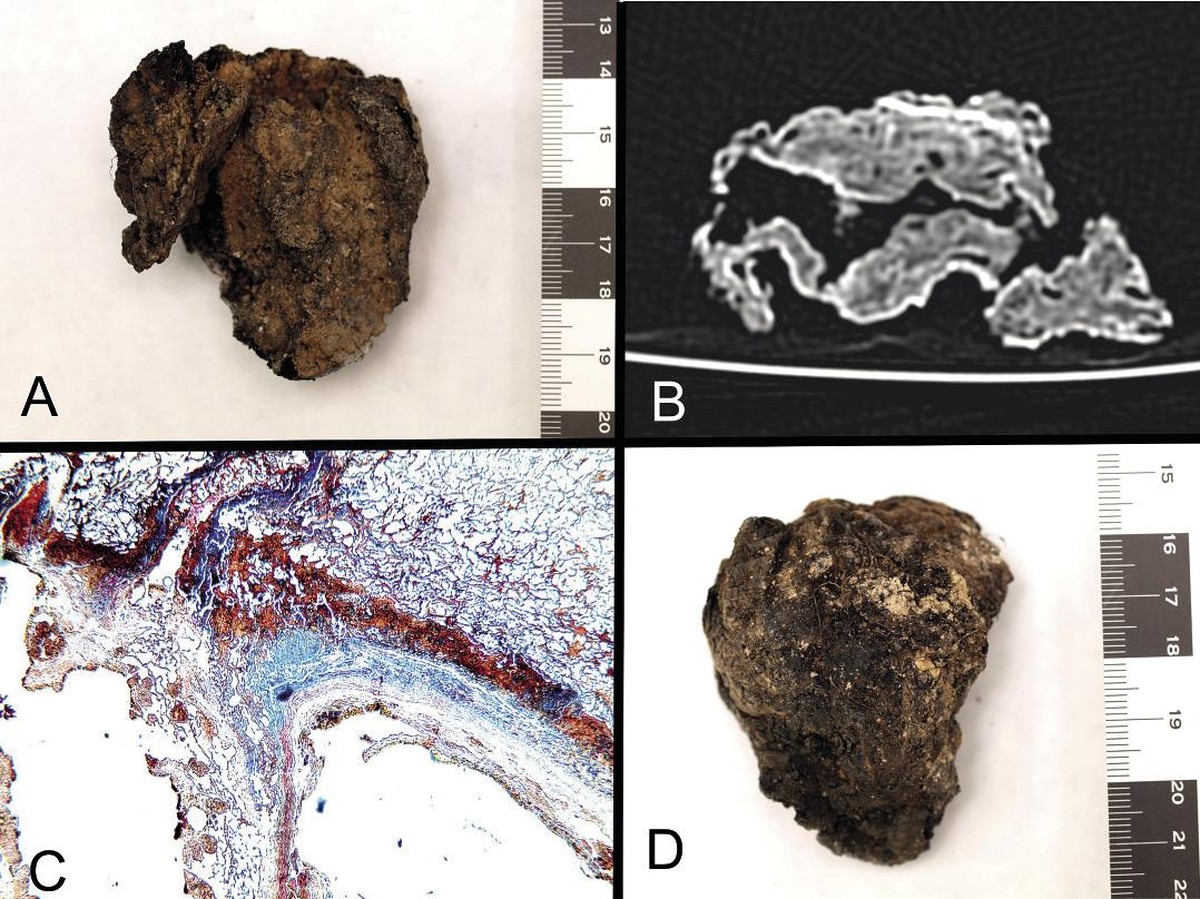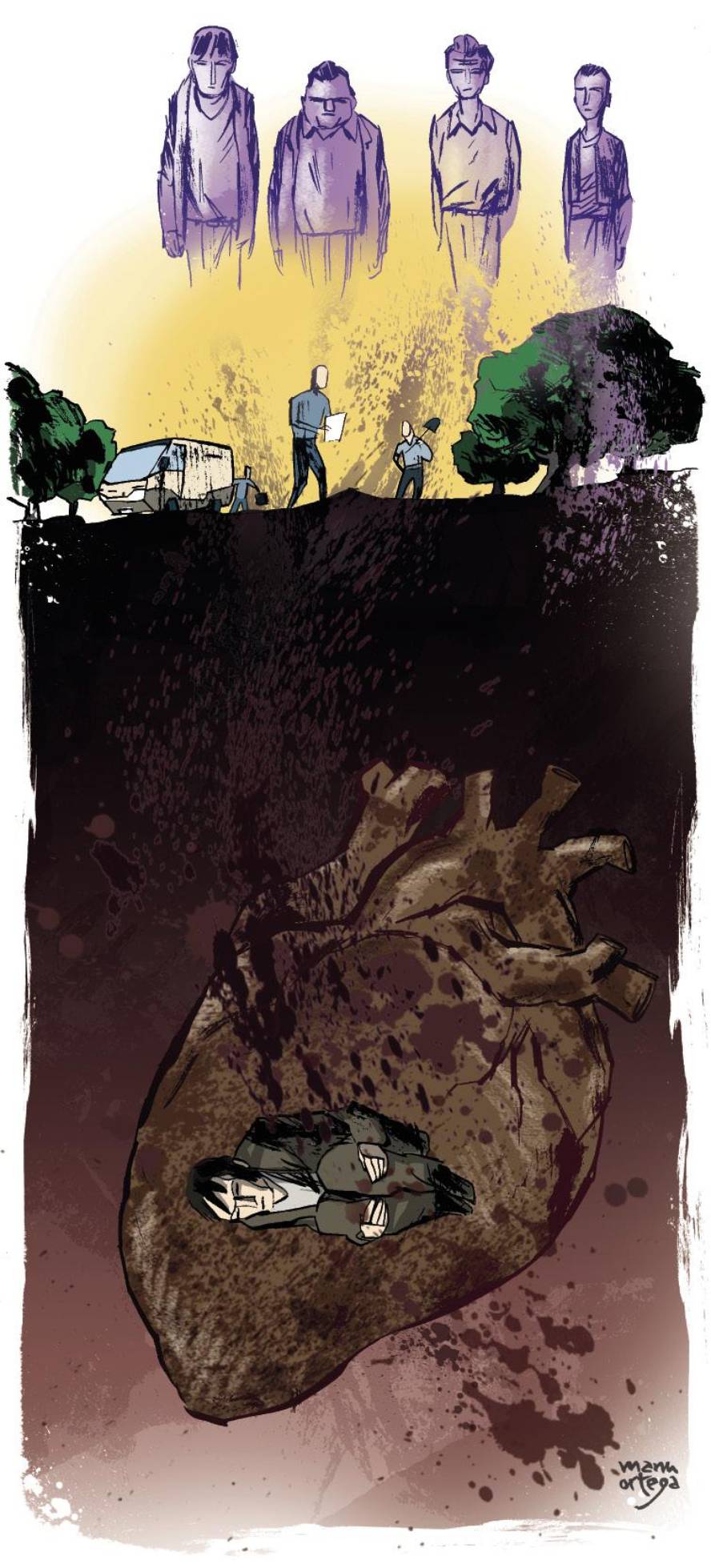45 Imprint of a brain and heart
Members of the Aranzadi Society of Sciences have for years exhumanized the remains of the dead and exhumed in the Civil War. In 2010 they were also in La Pedaja (Burgos). As usual, Paco Etxeberria worked under the direction of the forensic, anthropologist and researcher Gabilondo. One day he decided to call Fernando Serrulla Rechi. He is also a forensic doctor and a member of Aranzadi, a specialist in saponification, among others. That's why he called him Etxeberria: inside some of the skulls that were digging up, they were finding some special clues. They could be brains.
This was confirmed by the study: these were preserved brains thanks to the saponification process, with a total of 45. And with them a heart. According to Serrull it was an unusual discovery: “It is not so rare that a saponified brain appears. In the world there are about 400 documented. But they never met so much at once. Tell us: In the summer of 1936, 104 bodies were introduced into this pit and almost half of the brains were saponified. The heart is unique, no other cases are known anywhere else.”
At that time there were several phenomena that allowed the saponification. This is what Serrulla explains: “For saponification to occur in the bodies it is essential that there is water. And that summer of 1936 was very rainy. The pit would therefore be like a pool. And water prevents rotting of bodies.”
Remember that in other situations the opposite occurs. In places where moisture is very low, bodies appear mummified, dehydrated: “If Egyptian mummies have remained until today, not only for the treatments to the bodies, but for the dehydration caused by very low humidity and high temperatures. Therefore, the tissues do not rot because they dehydrate before the rot process begins, and sometimes the brain is preserved.”
Saponification process
He explains the reasons why rotting bodies in water is prevented: “60-70% of the body is water. The introduction of a body in a bathtub prevents the loss of water from tissues. This causes the rot process to slow noticeably. The brain is 60% fat. In the water it is hydrolyzed and fatty acids remain.”
Serrulla has determined that many of those who were buried in that pit were killed by head shots, so on the one hand, the brains were protected inside the skull, but on the other, the water had access to them. And between the fatty acids of the brain and the sodium and calcium of the soil there was a process of saponification.
Serrulla explains the process in detail: “Body fats are triglycerides, that is, a glycerol molecule with three fatty acids. If triglycerides remain in water for long periods of time, hydrolysis occurs and fatty acid bonds are released. Therefore glycerol and free fatty acids remain. The mixture of free fatty acids with some cation produces esters. And all lands have calcium, even those of little lime, like the Galician ones. And they also have sodium.”
Match soap making: “The soap is made by mixing oil and caustic soda, oleic acid and sodium. The result is soap. The same thing happened there.”
A heart
Since then, they have realized that the saponification of the buried brains is not such a strange phenomenon, but is also being discovered in other places, as in the grave of the cemetery of El Carmen (Valladolid) or in Villabasta de Valdavia (Palencia). On the contrary, the appearance of the saponified heart is totally rare. And it's that the heart just has fat, it's actually a muscle.
According to Serrull, his owner had fat in his heart from illness. “He would suffer from some genetic disease. 14 individuals from La Pedaja, whose brain is also preserved. Perhaps he had a tesaurismosis. I once knew a case in an autopsy and the heart looked like a fatty liver. In these cases, the heart has so much infiltrated fat that it has more fat than the muscle.”

Serrulla has confessed that he would like to further investigate this heart and other aspects such as histological, chemical and genetic studies. In fact, Serrulla and his colleagues published in 2016 the first research on these organs (in the journal Science and Justice) and would continue to investigate at ease, but have no grant for it.
Some aspects of research
The published article details that this is an interdisciplinary investigation. Thus, archaeologists, dentists, pathologists, historians, social anthropologists, osteoarchaeologists, biologists, psychologists, photographers, geophysicists and volunteers from different fields worked alongside anthropological litigation.
Among the historical data, the article includes those that explain the context: most of the dead were young men who faced the fascist uprising. Many were killed by gunfire in the head, not near the pit, but not far from it. They were buried in more than one turn and had much lost blood to throw into the hole. According to the researchers, this facilitated saponification: the lack of blood of the brains delayed rot and contributed to saponification, especially because water reached the brains mixed with cations.
To reach these conclusions, three brains (the best preserved) were analyzed using macroscopic, histological, radiological, chemical-toxicological and genetic analyses. In addition, a chemical analysis of the soil was performed and 3D models were developed.
As for the land, the article mentions that it is clayey, waterproof, and that in the section in which the corpses were bonded (July to November 1936) it would be full of water. It also highlights the rain that precipitated: The nearest weather station is in Atapuerca and, as Serrulla has pointed out, those summers and autumn were especially rainy: that July rained seven times more than normal.

Thus, the brains were saponified. The article indicates the aspect they had when they unearthed: “The color, texture and smell of these masses were similar to that of the surrounding earth. They were characterized by the conservation of brain folds and other major structures, although they lost between 20 and 30% of the volume. Most had a greasy touch, but some were dry. Many were divided and some had remains of bullets. About 30% had both hemispheres, and a few even fragments of cerebellum.”
One of the three studied in detail also identified a hemorrhage before dying. They mention that it could be a consequence of torture or violence suffered.
Opening key
Because of the similarity of the saponified brains with the surrounding land, it does not seem strange to Serrulla that in other places, even though there are some, no one realizes, “as land”. However, since then they have “opened their eyes” and become referents.
Serrulla confesses that if those who work in the fields find a brain that can be preserved, they call it: “The most prominent case is that of some Roman catacombs. II. are from the twentieth century and were found a dozen years ago. His remains are being investigated by several universities that have found more than 20,000 stacked bodies on top of each other. Apparently they died from an epidemic and were all buried at once. For many have kept the brain. And there was a member of the University of Bordeaux, Eline Shotsmans, who called me to study brains.”
After analyzing the brains sent by Shotsmans, Serrulla explains that the results were very similar to those of La Pedaja: “Its composition, appearance… is very similar. Somehow, the brains of La Pedaja have served to learn that this phenomenon has occurred in other places, and to suspect that those masses that appear inside the skulls are not fragments of land, but brains, even if they have spent centuries for burial.” Therefore, the discovery of La Pedaja has been the key to opening a door and better understanding the remains of the past.







